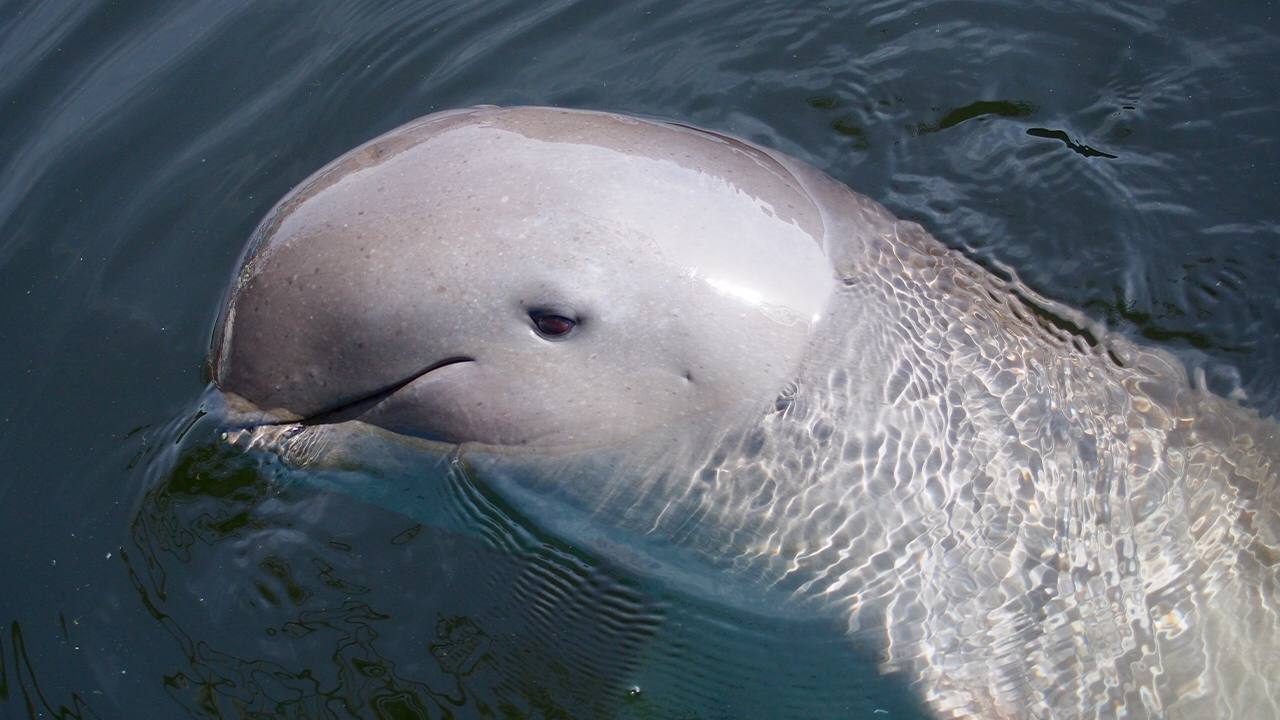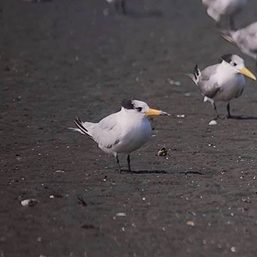SUMMARY
This is AI generated summarization, which may have errors. For context, always refer to the full article.

MANILA, Philippines – Lemnuel Aragones was getting worried. They had been scouring the whole of San Miguel Bay in Bicol for three days already, but the elusive Irrawaddy dolphins (Orcaella brevirostris) were nowhere in sight.
It is hard to spot an Irrawaddy dolphin partly because of its small size and dorsal fin. The conditions had to be perfect – and they were when Aragones and his team conducted their survey from July 6 to 9.
Nearing the end of their trip, Aragones said that for the first time since 1997 – when he started conducting surveys out in the field – he was worried he might leave a site without having laid eyes on the creature he was looking for.
But on their fourth and last day, the team finally saw two Irrawaddy dolphins – one near Apuao Island and another near Canimog Island.
It may have been a relief to the team, but these latest sightings of the Irrawaddy dolphins in Bicol confirmed that the rare dolphin species was already fast disappearing.
“Given the area that we covered and the number of dolphins that we saw, it is easy to eventually generalize that these animals are very, very much in peril,” Aragones, head of the Marine Mammal Research and Conservation Laboratory (MMRCL) at the University of the Philippines Diliman, told Rappler in an interview.
The team had to travel a total of 335 kilometers, covering the San Miguel Bay in 23 hours spread over four days.

Not only are Irrawaddy dolphins elusive, they’ve become more evasive too.
Aragones attributed this to the history of dolphins getting lost or caught in nets, saying “They adopt to the conditions.”
With him during the recent trip was a team of spotters from the Bureau of Fisheries and Aquatic Resources Regional Office 5 (BFAR 5) and Ateneo de Naga University Institute for Environmental Conservation and Research.
Aside from Bicol, these dolphins have also been sighted in Malampaya Sound in Palawan and in the area of Iloilo, Guimaras, and Negros Occidental.
The critically endangered dolphins are characterized by the color of their skin, which ranges from dark blue to dark gray and pale gray.
Their charm partly comes from their instantly recognizable rounded face and head with no beak. They are also not as “active” as bottlenose dolphins, who can somersault out of the waters.

San Miguel Bay is a major fishing ground that has been subject to overly exploitative fishing activities. This means less food for the rare dolphins, according to Aragones.
Now, the dolphins are probably using these offshore islands in San Miguel Bay as refuge areas. Just last year, an Irrawaddy dolphin was found dead in a Camarines Sur town.
Saving Irrawaddy
There are various efforts to conserve Irrawaddy dolphins in the Philippines.
In Negros Occidental, local government units, advocacy groups, and a school joined forces in a research studying the sustainability of marine protected areas for the dolphins.
The research also recommended against dolphin-watching, as boat traffic would disrupt the natural behaviors of the round-faced creatures.
Aside from boat traffic, destructive fishing, overfishing, coastal development, and plastic pollution all threaten the dolphins’ existence.

As early as the 2000s, conservation group World Wide Fund for Nature Philippines had already made a recovery plan that advocated the regulation of fishing activities, the red-data listing at the International Union for Conservation of Nature, and mapping boat routes to decrease the chances of boat strikes.
Mangrove reforestation is also seen as one way to create a healthier ecosystem for Irrawaddy dolphins.
But Aragones lamented that there is “no real harmonized effort to truly address this,” and from the time Irrawaddy dolphins were first sighted in the Philippines, “we haven’t really made much dent on [conservation].”
According to Aragones, he had recently talked to BFAR 5 Director Ariel Pioquinto about the possibility of imposing a moratorium on commercial fishing. He said this could be a win-win situation that would not only benefit the dolphins but also local artisanal fishers. – Rappler.com
Add a comment
How does this make you feel?



![[WATCH] Rappler Live Jam: dwta](https://www.rappler.com/tachyon/2024/07/live-jam-1280-baba.jpg?resize=257%2C257&crop=179px%2C0px%2C1080px%2C1080px)













There are no comments yet. Add your comment to start the conversation.